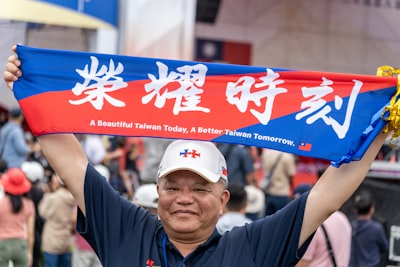Taiwan-U.S. Trade Talks: What the Second Round of Tariff Consultations Means for Both Sides
The ongoing development of Taiwan-U.S. trade relations has reached a new milestone. With recent reports highlighting Minister Cheng Li-chun and Deputy Minister Yang Jennie's official visit to Washington to complete the second round of substantive tariff negotiations, many are wondering what these trade talks mean for Taiwan's economy, the broader Indo-Pacific region, and international partnerships.
Why Are Taiwan-U.S. Tariff Talks Making Headlines?
The Taiwan-U.S. trade partnership is a cornerstone of Taiwan's economic strategy, and any movement in tariff negotiations often signals shifts in market access, technology exchange, and geopolitical alignment. The recent in-person consultations in Washington underscore both countries' commitment to deepening economic engagement despite mounting global uncertainties.
Relevant Keywords:
- Taiwan-U.S. tariff negotiations
- US-Taiwan trade agreement
- cross-strait relations
- supply chain cooperation
Key Goals of the Second Round of Tariff Negotiations
1. Reducing Trade Barriers One of the main objectives is to lower tariffs on key goods, enhancing competitiveness for industries such as semiconductors, biotechnology, and green energy.
2. Strengthening Supply Chain Cooperation Given shifts in global supply chains, particularly in the tech sector, Taiwan and the U.S. aim to ensure secure, reliable production of chips and other critical products.
3. Addressing Strategic and Security Concerns Trade talks also include safeguards for emerging technologies and enforceable standards for data protection, aligning economic collaboration with security frameworks in the Indo-Pacific region.
How Are These Talks Connected to Broader Trends?
The Indo-Pacific Economic Framework
The Taiwan-U.S. negotiations are taking place alongside regional initiatives such as the Indo-Pacific Economic Framework (IPEF), with each round influencing the alignment of democratic economies against authoritarian market models.
Comparing Taiwan's Approach with Other Countries
Taiwan’s pursuit of bilateral agreements with the U.S. contrasts with multilateral routes taken by regional neighbors. Examining these differences sheds light on why Taiwan is charting a unique path in international trade.
What Could This Mean for Taiwanese Businesses and Consumers?
- Easier market entry for Taiwanese exports
- Lower consumer costs on imported American goods
- Upgraded digital trade rules benefitting SMEs
- Potential investment in next-generation industries
Frequently Asked Questions (FAQ)
Q1: What are the main items under negotiation in Taiwan-U.S. trade talks?
A1: They include tariffs on manufacturing, agricultural products, digital trade, and technology standards.
Q2: How does this affect the average consumer in Taiwan?
A2: Reduced tariffs can lower retail prices for imported goods and foster economic growth, creating more job opportunities.
Q3: Will a Taiwan-U.S. trade agreement affect cross-strait relations?
A3: While primarily economic, closer Taiwan-U.S. ties may be watched closely by Beijing, potentially influencing cross-strait dynamics.
Conclusion: What to Watch for Next
The successful completion of the second round of Taiwan-U.S. tariff talks paves the way for deeper economic cooperation. Stakeholders in both countries will closely monitor future developments, particularly regarding which sectors benefit most and how these agreements shape Taiwan’s role within global supply chains.
Want to understand how these talks could impact your industry? Stay tuned for updates and analysis on Taiwan-U.S. trade policy and regional economic trends.

Comments
No comments yet. Be the first to comment!